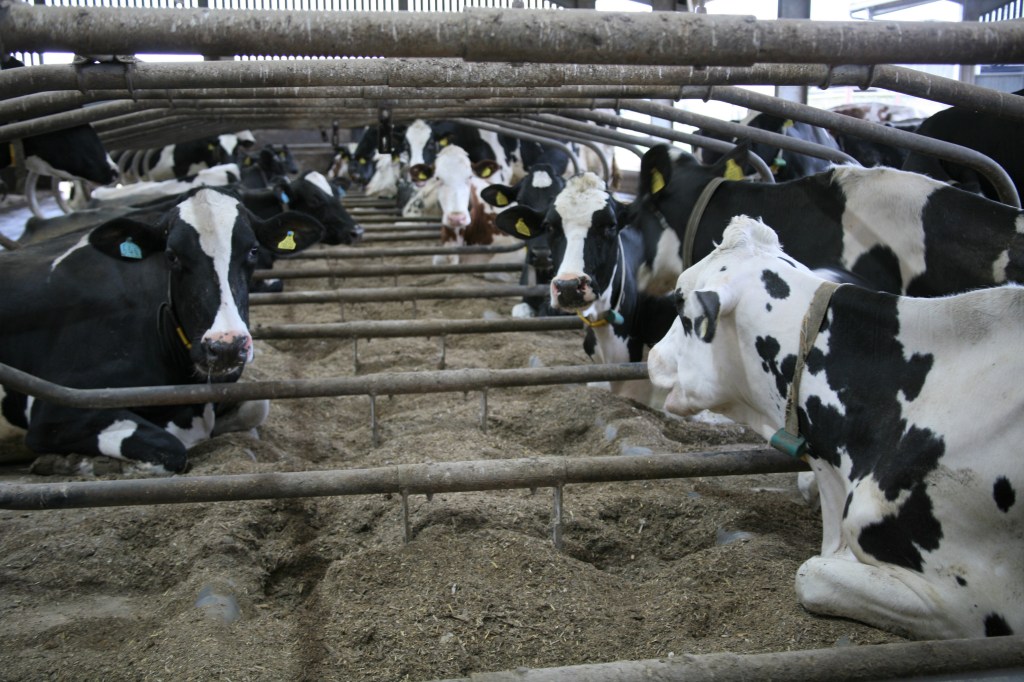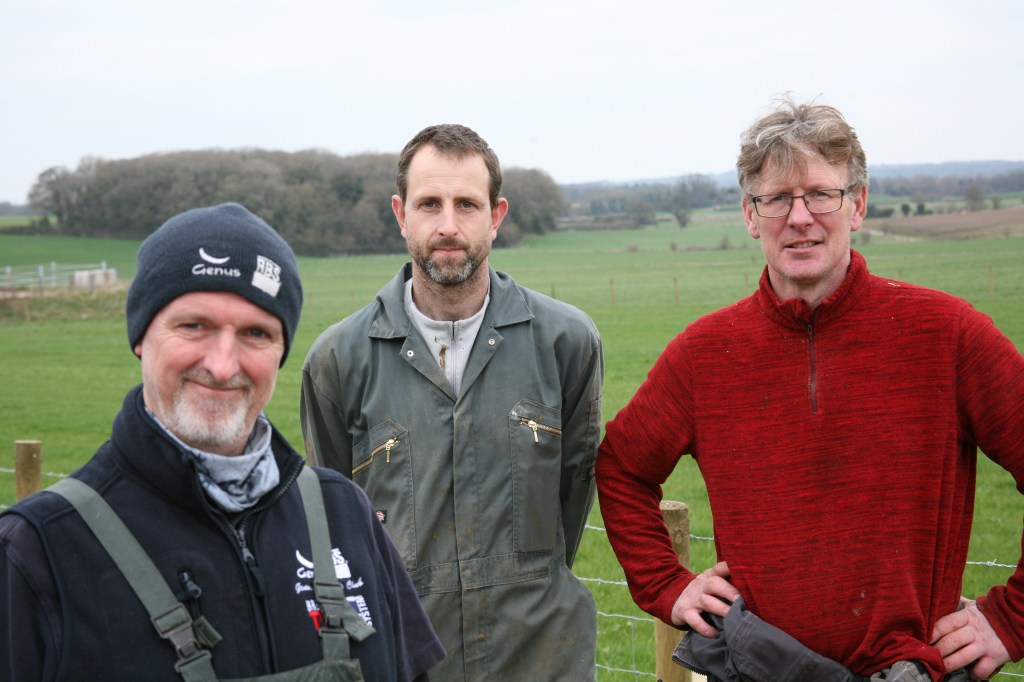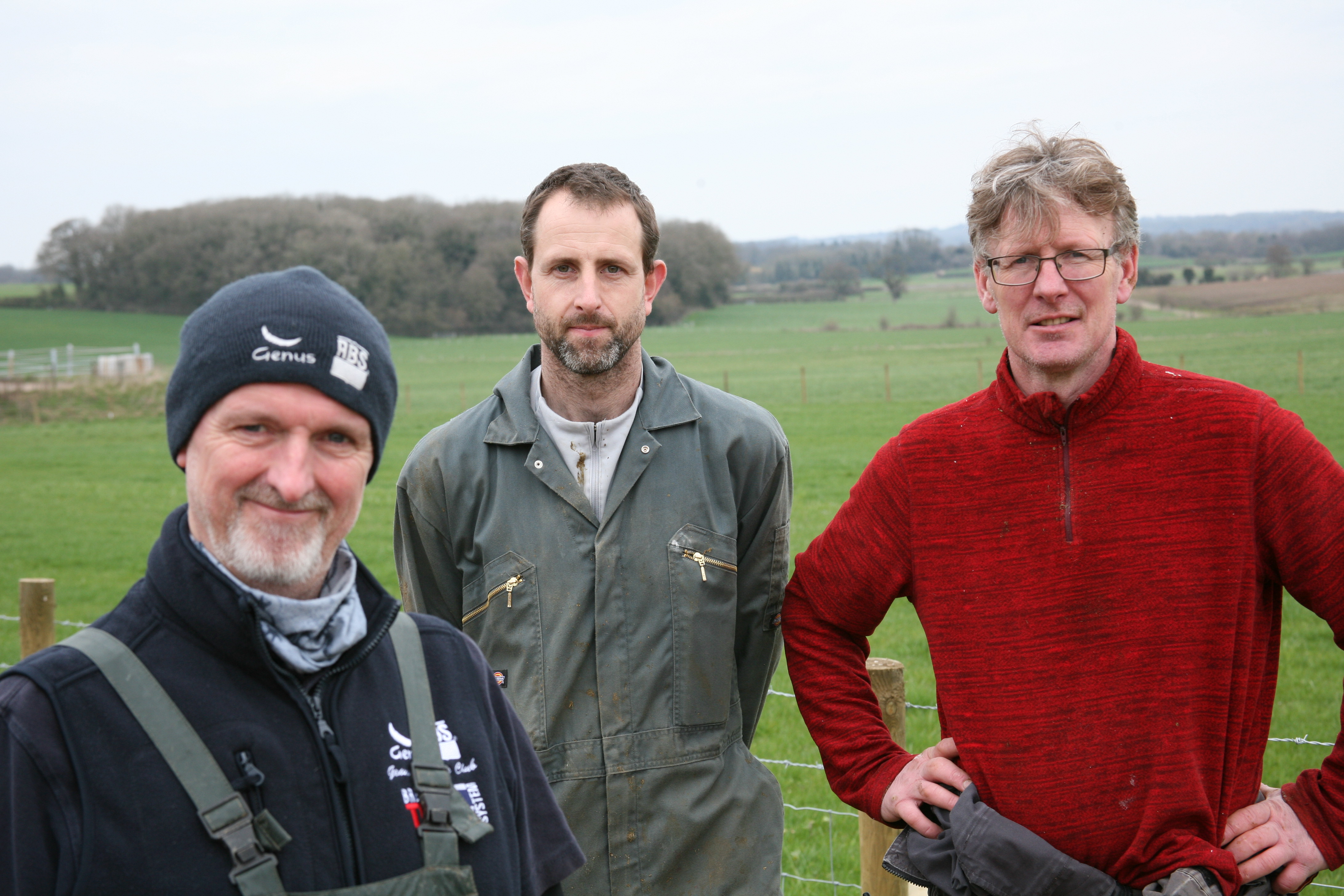This article originally appeared in CowManagement UK (May, 2021) written by Phil Eades
Name: Simon Heath
Herd size: 890 Holstein cows
Average yield: 11,500 litres at 4.10% butterfat and 3.40% protein
Pregnancy rate: 27%
While improving fertility was the prime reason for investing in a pedometer-based heat detection system, the additional management information provided has resulted in other significant improvements.
Simon Heath runs the 800 hectare Stockton Grange Farm near Newport, Shropshire. In addition to running an 890 cow dairy herd and 700 youngstock, Simon grows acres of potatoes and operates an AD unit, permanent grass, temporary grass leys, cereals, maize and fodder beet.
“The herd has grown over the past few years and we have space for 1000 cows in the current unit,” Simon Heath explains. “To be able to expand more we needed to work on increasing the number of heifers reared and reduce replacement rates.”
The all year-round calving herd are TMR fed and housed all year in 10 different groups. They are milked three times a day through a 50-point rotary parlour.
The objective is to bring 42 heifers into the herd per month calving in at 23 months old. Around 40% of cows and all heifers are served with Genus ABS Sexcel semen with the rest of the herd mainly served to British Blue.
Simon runs the herd with herd manager Andy Sanderson and assistant herd manager Rich Wall, along with a team of staff who split their time between the cows and other enterprises on the farm.
Wanting to improve reproductive efficiency, Simon decided to enrol with Genus ABS Reproductive Management System (RMS) for all cows and heifers, working with Reproduction Management Specialist Rob Robinson.
“The layout of the farm made it difficult to chalk and serve cows which made getting the full benefits of RMS more challenging” Rob Robinson comments. “Cows needed to be moved to be served and were often separated from their group mates, leading to increased stress. This and the general practicalities of finding cows meant that while heat detection was improving, we could not deliver the full benefits. Despite these challenges, pregnancy rates were running at around 21% but we felt there were more gains to be realised.”
So, after discussions between Simon and Patrick Spencer, Genus ABS UK Manager: health, fertility and technology, it was decided to install the Genus ABS Breeder Tag System.

Patrick explains: “Using pedometers would achieve the increased heat detection rates and then working with the farm team we could ensure cows are segregated for service. This would allow Rob Robinson to focus on insemination to help improve pregnancy rates.”
In February 2019, the milking herd was moved onto Genus ABS Breeder Tag System with every cow being fitted with a pedometer. The heifers remained on RMS as the system had been working well with them.
The cows for service are identified on an action list before morning milking. They are segregated at milking, served by Rob and immediately return to the group, often before milking has finished. This has reduced stress on both cows and people and improved overall efficiency. As the milking heifer yard has locking yokes, they are served in the yard, further reducing stress and cattle handling.
“The system is working very smoothly,” Simon Heath continues. “Using the tag data we can sort cows quickly at morning milking ready for the AI visit. All fertility parameters have improved. Submission rate has been running at 74% with a 27% pregnancy rate. Over half the herd are in calf by 100 days in milk and the number of cows not in calf by 210 days in milk has reduced by 10%.”
“Heat stressed cows will produce less milk with poorer compositional quality. They will suffer depressed fertility and are more prone to disease. Based on analysis of milk records and using a winter to summer ratio economic calculator to assess potential losses we calculated that the consequences of heat stress could be costing Simon over £100,000 per year.”
While you would expect a system designed to identify bulling cows to have a positive impact on fertility, the data generated by the pedometers have also been used to identify bottlenecks in the system and allow improvements in production, health and welfare. The skill is to identify what the data can do and then use the data effectively.
Mr Spencer says front leg fitted pedometers are the most accurate way to collect data on activity and movement, saying that collars are less effective at identifying when cows are standing or lying down, as these are deemed as periods of low activity which can be clearly determined with pedometers.
“This information can be used to spot management issues which may not be apparent, allowing corrective action to be taken.”
Analysis of conception rates by calendar month showed a fall in the summer months in both cows and heifers with troughs in conception rate seen two years in succession. Mr Spencer says this is an indicator that cows are suffering from heat stress.
“Heat stressed cows will produce less milk with poorer compositional quality. They will suffer depressed fertility and are more prone to disease. Based on analysis of milk records and using a winter to summer ratio economic calculator to assess potential losses we calculated that the consequences of heat stress could be costing Simon over £100,000 per year.”
It was agreed to reduce the height of some walls and to take out boarding to increase ventilation in the dry cow groups to increase air flow and the exchange of air.
“This would help cows transition better and this was the main group where ventilation was an issue. The results have been significant. We are no longer seeing a depression in pregnancy rates in the summer months and average milk yield by week four of lactation has increased by six litres.”
The Breeder Tag System also provides comprehensive data on cow behaviour, particularly related to the number and duration of feeding visits, which can be used to identify improvement opportunities to drive efficiency.
How a cow spends her time has a massive influence on performance, both production and fertility. In an ideal set up a cow will spend 50% of her time lying down, 19% in fixed management activities such as milking and 21% eating. Any changes in behaviour can be an early warning of a potential problem, so spotting changes in routine can highlight management events like heats and also signs of disease.
Looking at changes in lying times and the number of times cows get up and lie down are good indicators of potential problems. If a cow is lying down for longer and getting up less often, this is a sign of a potential lameness issue as the cow tries to reduce pressure on her feet. Conversely a cow who lies less and gets up and down more often may well be in the early stages of mastitis, trying to reduce lying on a sore udder.
“Using the daily action lists produced by the system we can quickly identify cows where changes in behaviour are linked to her bulling. Any cows left will be checked to see if there is a problem, helping us take action sooner to reduce disease severity,” Andy Sanderson comments.
“By making use of data it has been possible to improve fertility and production by fine tuning the system and identifying group and individual cow problems which together will help achieve the expansion objectives. With more calves and heifers available we will be able to not only build herd size but also improve genetic merit and improve the overall quality of the herd by replacing under-performers.”




